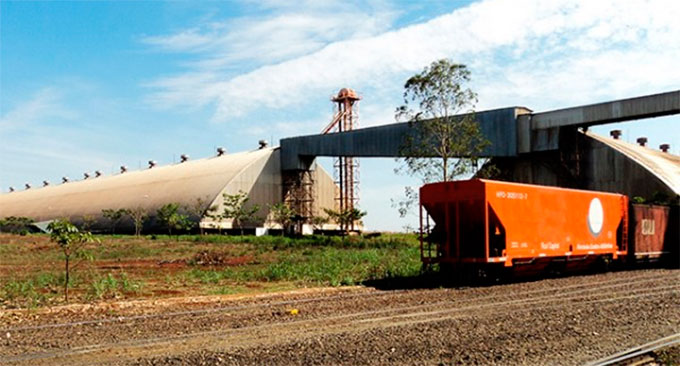WAREHOUSE CEAGESP SP – Storage Network
The storage network also followed the Company’s growth. In 1970, the first horizontal silos (large cylinder-shaped warehouses to store agricultural products) were built in the country, coupled to bulk carriers (places that receive or house bulk goods). At the time, the network received regulatory stocks from the Federal Government, purchased in several states and stored in cities in the interior of São Paulo.
As of 1986, the company’s warehouses began to store bagged sugar, due to the expansion of the sugarcane crop, which, along with oranges, took the lead in agriculture in São Paulo. In 1997, CEAGESP was federalized and linked to the Ministry of Agriculture, Livestock and Supply.
CEAGESP maintains the largest public network of silos and general warehouses in the State of São Paulo, managed by the Department of Storage (DEPAR). Together, the chain’s units have the capacity to store more than 850 thousand tons of products.

Storage is classified as one of the main activities developed by the Company, knowing that agricultural production is the farmer’s greatest wealth, it offers the best storage conditions for the harvest. It has adequate structures for storage, with large cylinder-shaped deposits to store agricultural products, where they receive the goods and house them safely and with quality so that there is no loss. Network management is the responsibility of the Storage Department (DEPAR).
CEAGESP SP Warehouses
Altogether 18 active units located close to the productive centers present in the capital and in the interior of São Paulo. Are they:
- CEAGESP Araraquara
- CEAGESP Avaré
- CEAGESP Bauru
- CEAGESP Botucatu
- CEAGESP Fernandópolis
- CEAGESP Palmital
- CEAGESP Pederneiras
- CEAGESP President Prudente
- CEAGESP Ribeirão Preto
- CEAGESP São Joaquim da Barra
- CEAGESP São José do Rio Preto
- CEAGESP São Paulo
- CEAGESP Tatui
- CEAGESP Tupã
Stored Products
The main items stored are bulk products, such as grains, sugar and pellets, agricultural products in sacks and/or bags and industrialized products according to the structure available at each unit.
Services offered
- Personalized Service: Agronomist engineers and specialized technicians guide all stages of the storage process.
- Sampling and Classification: all grains, before being stored in the Silos, go through a sampling and classification process (moisture content, foreign matter, impurities, insects, among other important items in the classification of the product).
- Cleaning and Drying: when the grains present impurities and/or moisture content above the CEAGESP receiving standards (1% impurity and 13% moisture), they undergo a cleaning and drying before being stored.
- Phytosanitary Treatment: process carried out on the products received (purge and/or spraying with liquid insecticide) in order to avoid the occurrence of pests and ensure the maintenance of quality during storage.
- Transhipment: Transfer of goods from one vehicle to another of the same type.
- Truck scale: Individual weighing with tariff.
- Warrants: CEAGESP is authorized to issue Special Credit Bonds that enable the financing of inventories of stored products.
Customers
They serve small, medium and large agricultural producers, sugar mills, mills, agricultural cooperatives, importers, exporters and government agencies.
Difference between Warehouse and Warehouse
Warehouse is the name given to the place where different types of products are sold, in the case of CEAGESP it is where the sale of fruits, vegetables, vegetables, fish and flowers takes place. The warehouse, on the other hand, is like the stock of non-perishable foods such as sugar and grains.
